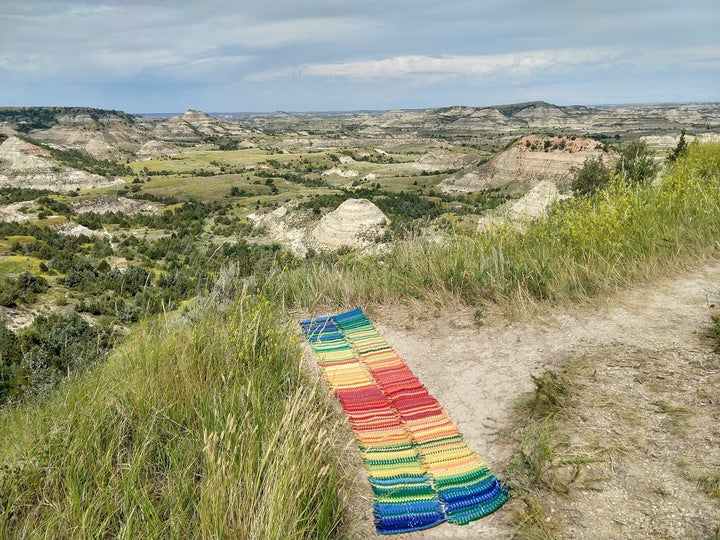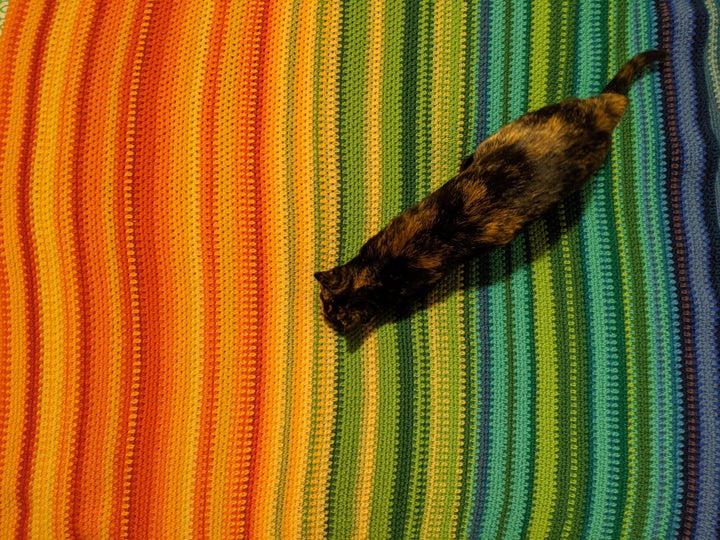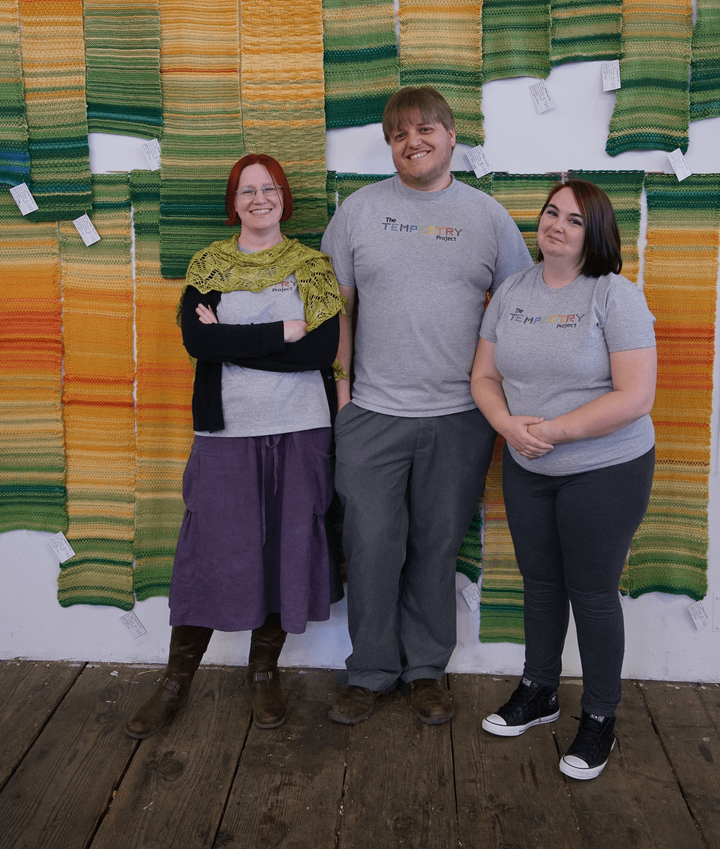
Eryne Croquet has a rainbow blanket that holds both sentimental and historical value for her. Every colour represents a specific temperature range for each day in 1998 in Prince George, B.C., the year and place of her son’s birth.
The massive blanket is not only a cosy reminder of that year of motherhood but also an illustration of just how much the climate has been changing.
“I was interested in making temperature blankets because I wanted to explore the past,” said Croquet. “For the longest time, 1998 was held as [Canada’s] hottest year on record; it just keeps on getting beaten every year.
“When you do something that takes more than a year, you start to look for patterns. It’s not very often that I think about weather that much [but] because it was a year that was significant for me, I could kind of remember, ‘Oh yeah it was really hot.’”

Now based in Chilliwack, B.C. the geoscientist said the blanket has initiated conversation about climate change with her family and friends. “People start looking at the patterns themselves, they’ll recognize a cold snap or something,” she told HuffPost Canada. “Plus, it’s tactile, people want to touch it.”
Temperature knitting has been trending since British author and knitter Josie George shared a scarf she was working on via Twitter earlier this month.
Thanks to two hardcore knitters in Washington, it turns out knitters around the world have been uniting over the past few years to create tangible records of climate change, and as a form of therapy.
“Temperature knitting has been around for a long time,” said Justin Connelly. “What we did was take the idea of it and make it into a systematic thing where everyone is using the same colour for the same temperatures.”
Connelly and partner Emily McNeil came up with the Tempestry Project (a mashup of “temperature” and “tapestry”) shortly after Donald Trump became U.S. president in 2017. As the climate-change denier entered the White House, scientists were worried that he would come after their data.
Connelly and McNeil were half-worried and half-kidding when they joked that if the data was in the form of a tablet or tapestry, it couldn’t just be erased with the push of a button.

“We made the joke and then looked at each other like, ‘Wait, we can do that’,” said McNeil about their company that helps people start their own temperature knitting projects.
There’s a funny duality that comes with temperature knitting: a calming activity forced against fear-inducing data. A blanket can take 20 to 30 hours to put together, which allows knitters to connect with the data on a deeper level than they usually would.
“It’s a sort of cathartic, therapeutic experience where they take this anxiety and turn it into this concrete piece of fibre art that they can share with their communities and families.”
Some knitters have taken it one step further and deepened their environmental activism by taking their tempestry blankets out to climate rallies.
Tempestry hit a nerve
Connelly and McNeil organize occasional showings of tempestries they’ve gathered from several areas. They said tempestries have been made for every continent.
A woman at one of these showings told McNeil and Connelly that she was a bit of climate change skeptic, but a tempestry in the collection that day hit a nerve.
It was one that represented 1957 climate data from a Washington lake near where the woman grew up, said Connelly. On the tempestry, she saw a row of colder temperatures that reminded her of ice skating there that very year.
“But then you go down the row of tempestries and that colour is never present again in that same location,” said Connelly. “She had the realization of ‘Oh it has changed, I just hadn’t realized how much.’”
“So making something soft and warm that’s going to go on a bed and people are going to sleep under it and be cuddled by it — it’s a little bit of a political statement.”
- Eryne Croquet, Geoscientist and knitter
As scientists and activists continue to warn the world of the urgent realities of climate change, it’s simultaneously brought on information fatigue. But temperature knitting, as Connelly puts it, helps people connect to the issue by putting the data “right in their backyard.”
“You’re showing them what’s already happened in the span of their lifetime.”
McNeil has been knitting with global data going back to the 1880s up to the present day, and the rows of stitches show the glaring reality of the average temperature rising year by year.
Watch: The last decade was the warmest on record. Story continues below.
“It’s just heartbreaking holding them side-by-side,” said Connelly.
“When you’re trying to get people to understand and think about climate change, it can be kind of hard to initiate that conversation,” said Croquet, who’s waiting on yarn for a new tempestry project. “So making something soft and warm that’s going to go on a bed and people are going to sleep under it and be cuddled by it — it’s a little bit of a political statement.”